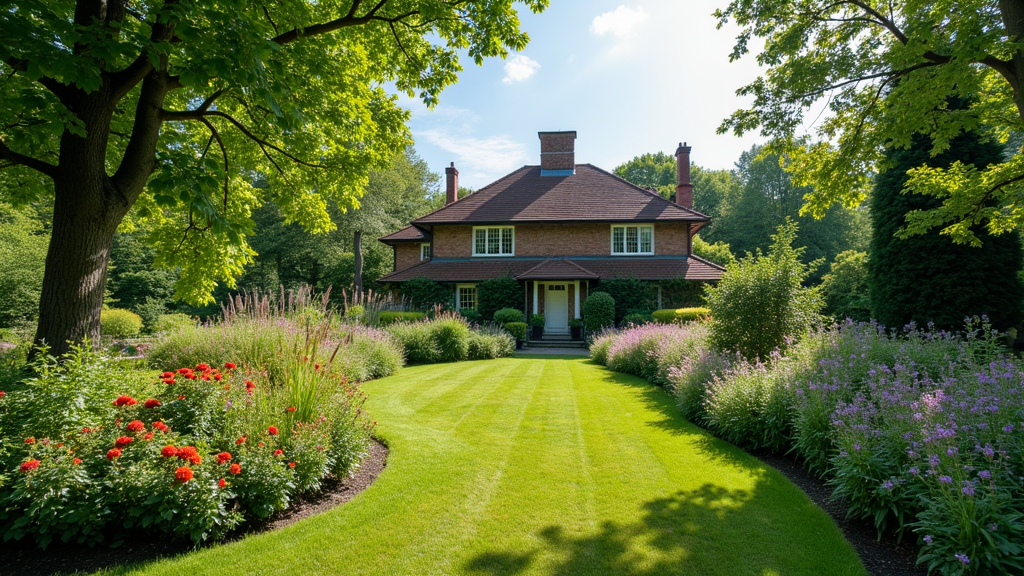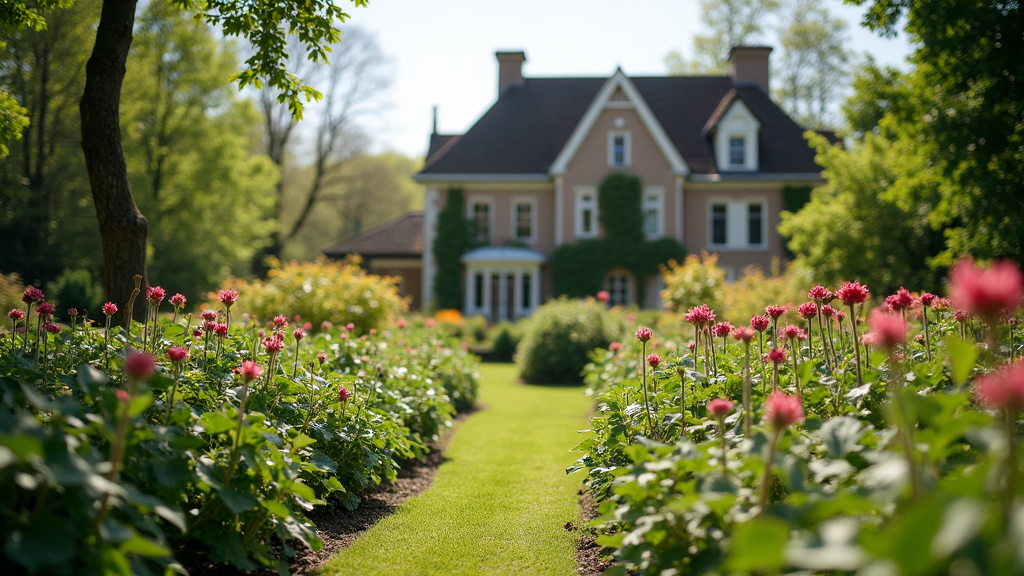Introduction
In a world where water scarcity is becoming more prevalent, finding sustainable solutions in landscape design has never been more crucial. One such solution that has gained significant traction is xeriscaping. But what exactly is xeriscaping, and how can it transform the way we think about designing landscapes?
Xeriscaping is not just about using cacti and desert plants; it's a holistic approach to garden design that maximizes irrigation efficiency while minimizing maintenance. By utilizing native plants, strategic landscaping techniques, and smart irrigation practices, xeriscaping offers both aesthetic appeal and ecological benefits. In this article, we’ll dive deep into the multifaceted advantages of xeriscaping, shedding light on its role in sustainable landscape design.
What is Xeriscaping?
Understanding Xeriscaping Principles
Xeriscaping revolves around seven core principles designed to create beautiful yet water-efficient landscapes. These principles include:
Planning and Design: Careful layout considering plant selection and irrigation. Soil Improvement: Enhancing soil quality to retain moisture effectively. Plant Selection: Choosing drought-resistant native plants. Efficient Irrigation: Implementing systems that minimize water waste. Mulching: Using organic materials to reduce evaporation. Maintenance: Adopting low-maintenance practices for sustainability. Appropriate Turf Areas: Limiting turf grass to essential areas only.The Importance of Water Conservation
Water conservation is paramount in today's climate crisis. According to the U.S. Geological Survey, landscaping accounts for nearly 30% of residential water use! Xeriscaping dramatically reduces this figure by optimizing water usage through thoughtful design choices.
Exploring the Benefits of Xeriscaping in Landscape Design
Aesthetic Appeal Meets Functionality
One might wonder, “Can a xeriscaped yard be as beautiful as a traditional garden?” The answer is a resounding yes! By incorporating various textures, colors, and forms from native plants, xeriscaped gardens can be incredibly vibrant.
Diverse Plant Options
When designing landscapes with xeriscaping principles in mind, you can choose from a plethora of plant options such as:
- Succulents Ornamental grasses Native wildflowers Drought-tolerant shrubs
These selections not only enhance the visual appeal but also thrive with minimal care.
Cost Savings Over Time
Investing in xeriscaped landscape design can lead to significant cost savings over time. Here’s how:
- Reduced Water Bills: Less dependence on irrigation means lower monthly expenses. Lower Maintenance Costs: Many xeriscaped gardens require less upkeep compared to traditional ones. Long-Term Investment Value: Homebuyers are increasingly looking for sustainable features—xeriscaped properties can command higher prices.
Environmental Advantages of Xeriscaping
Promoting Biodiversity
Xeriscaping supports local ecosystems by providing habitats for various species like pollinators and beneficial insects. This method encourages biodiversity while reducing reliance on chemical fertilizers and pesticides.
Creating Habitats
By selecting native plants that attract birds, bees, and butterflies, homeowners not only beautify their surroundings but also contribute positively to local wildlife populations.
Soil Health Improvement
Healthy soil plays a vital role in any effective landscape design strategy. Xeriscaping promotes soil health through organic mulching practices which enhance moisture retention and nutrient availability.

Designing Landscapes with Xeriscaping Techniques
Effective Planning Strategies
Crafting an efficient landscape begins with careful planning—a crucial aspect of successful xeriscape design.
Site Analysis
Conducting a thorough site analysis helps determine factors like sun exposure, soil type, and drainage patterns—essential elements that dictate plant selection.
Zoning Your Landscape
Consider creating zones within your yard based on water requirements during your planning phase:
- High-water use areas (near patios or pools) Moderate-water areas (flower beds) Low-water areas (rock gardens)
Irrigation Systems for Efficiency
Implementing an efficient irrigation system is key when designing landscapes focused on xeriscaping principles.
Drip Irrigation
Drip irrigation delivers precise amounts of water directly to the roots of plants—a fantastic way to conserve resources while ensuring healthy growth.
Rainwater Harvesting
Collecting rainwater through http://sethfhbv882.theglensecret.com/creating-a-pet-friendly-landscape-design-for-your-home-in-stokesdale barrels or cisterns can provide an eco-friendly watering source for your xeric garden!

Common Misconceptions About Xeriscaping
It’s Just Cactus!
Many people mistakenly believe that xeriscaped gardens consist solely of cacti and barren rock formations. In reality, they encompass a vast array of lush greenery!
High Initial Costs Are Prohibitive
While upfront costs may seem high due to specialized plants or installation fees, consider long-term savings from reduced water bills—making it an investment rather than an expense!
Xeriscape Maintenance Made Easy
Simplifying Garden Upkeep
One major advantage of xeriscaped landscapes is their low maintenance needs compared to traditional gardens.
Smart Pruning Practices
Regularly pruning plants not only keeps them looking tidy but also encourages new growth without excessive labor!
Seasonal Adjustments
Adjust your watering schedule seasonally based on rainfall levels—an easy yet effective way to maintain your garden's health year-round!
FAQ Section
1. What types of plants are best suited for xeriscaping?
Answer: Drought-resistant native plants like lavender, succulents, ornamental grasses, and certain shrubs work excellently in xeric gardens as they are adapted to local climates.
2. How do I start my own xeriscape garden?
Answer: Begin with careful planning—analyze your site’s conditions (sunlight, drainage) before selecting suitable drought-tolerant plants that thrive well together!
3. Does xeriscaping mean no lawn at all?
Answer: Not necessarily! While turf areas should be minimized, you can still incorporate small patches of grass where necessary—just be mindful of its water needs!
4. Can I add features like walkways or patios?
Answer: Absolutely! Hardscapes such as patios and pathways complement your landscape design beautifully while allowing for efficient water usage overall.
5. Is there any downside to switching my yard over?
Answer: The primary challenge lies in initial costs; however, the long-term savings on water bills make it worthwhile over time!
6. How often should I irrigate my xeric garden?
Answer: Water requirements depend greatly on seasonal weather conditions; generally speaking though—less frequent watering (once every week or two) suffices once established!
Conclusion
In summary, exploring the benefits of xeriscaping in landscape design reveals its myriad advantages—from cost savings and low maintenance requirements to environmental sustainability and aesthetic beauty. As we face increasing challenges related to climate change and dwindling natural resources, adopting practices such as these becomes imperative—not just for our enjoyment but also for the planet's future health.
So why wait? Embrace the art of designing landscapes through xerics today! With thoughtful planning and creativity at play alongside nature's wonders—you'll not only cultivate stunning outdoor spaces but contribute positively toward preserving our precious resources too!